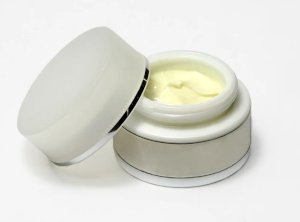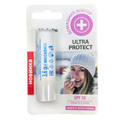 Back in the day, the term “sun protection factor” (SPF) was exclusively associated with sunscreen. Today, however, a lot of cosmetic products have an SPF for additional protection from UV rays. Let us tell you how to choose a daytime moisturiser with SPF in order to protect your skin from sun exposure all the year round.
Back in the day, the term “sun protection factor” (SPF) was exclusively associated with sunscreen. Today, however, a lot of cosmetic products have an SPF for additional protection from UV rays. Let us tell you how to choose a daytime moisturiser with SPF in order to protect your skin from sun exposure all the year round.
Let us start by saying that we need sun exposure to stay healthy because sunlight boosts the production of serotonin and vitamin D. Serotonin is a hormone that regulates our mood, memory, cognition, learning and various physiological processes, and vitamin D is responsible for helping our body to absorb calcium, magnesium, and phosphorus. However, this doesn’t mean that you should spend hours in the sun. Getting about 15 minutes of sunlight on your skin 2-3 times a week is enough for vitamin D production; the rest of the time, you need to protect your skin from the sun.
One of the negative effects of prolonged exposure to sunlight is the so-called skin photoageing. UVA and UVB exposure can lead to the degradation of skin collagen, which results in loss of skin firmness and elasticity. Other signs of photoageing are dryness, flaking, pigmentation, and premature wrinkles. In addition to premature skin ageing, long-term sunlight exposure is associated with the development of some types of skin cancer, such as melanoma.
Skincare products with SPF are a solution that helps to protect the skin from UV exposure and its negative effects. As we’ve already mentioned above, SPF stands for sun protection factor. It measures the fraction of UV radiation that reaches the skin and causes sunburn:
- SPF 2 to 4 blocks 50 to 75% of sunburn-producing UV rays (basic protection);
- SPF 4 to 10 blocks 85% of UV rays (medium protection);
- SPF 10 to 20 blocks 95% of UV rays (high protection);
- SPF 20 to 30 blocks 97% of UV rays (intensive protection);
- SPF 50 blocks 99.5% of UV rays.
As a rule, the effectiveness of skincare products with SPF is estimated based on how much time one can be exposed to sunlight without getting sunburnt. Without sunblock, your skin starts to get damaged after 10 minutes of exposure. SPF 15 will allow you to stay safely in the sun for 150 minutes, SPF 20 for 200 minutes, SPF 30 for 300 minutes, etc.
The time of safe exposure to the sun may vary depending on your skin’s phototype according to the Fitzpatrick scale, which estimates the response of different types of skin to UV light: the paler the skin, the more protection it needs. The ultraviolet index of your location matters as well.
The ultraviolet index (UV index) is an international standard measurement of the strength of sunburn-producing UV radiation at a particular place and time. The higher the index, the higher the risk of harm from unprotected sun exposure. The UV index 0 to 2 is classified as low, 3 to 5 as moderate, 6 to 7 as high, 8 to 10 as very high, and 11 or higher as extreme. You should also keep in mind that regardless of the UV index, bright surfaces, such as sand, water, and snow, will increase UV exposure and risk of harm.
Most places in the temperate climate zone have a UV index of 3 to 5, even in summer. This means that you should apply broad spectrum SPF 30 sunscreen every 1.5 hours when spending time outdoors. If you don’t spend much time outside, applying a daytime moisturiser with SPF 15–20 in summer and SPF 10 in winter should be enough. However, if you have very pale skin (type I or II on the Fitzpatrick scale), you should opt for a higher sun protection factor: SPF 30 or 40 in summer and SPF 20 or 30 in winter.
Regardless of the season, you must use a daytime moisturiser with SPF after aggressive beauty treatments that temporarily make your skin more vulnerable to sun exposure, for example, chemical peels. In this case, you’ll need to apply a moisturiser with SPF 30 or higher for at least two weeks after the procedure to protect your skin while it heals.
It is important to keep in mind that layering two or more products with SPF doesn’t add up to a higher level of protection. No matter how many products with SPF you apply, your overall protection from the sun will equal the highest SPF number among them.
By the way, sunscreen ingredients in moisturisers and other products with SPF are divided into two groups depending on their mode of action: physical and chemical. Physical sunscreens mainly deflect the UV light, while chemical sunscreens absorb it. Most products with SPF contain both types of ingredients for the best effect.
In addition to sun filters, daytime moisturisers should contain other active ingredients depending on your skin type. For example, oily skin needs anti-inflammatory and absorbent ingredients; dry skin needs moisturising and revitalising ingredients; sensitive skin needs soothing ingredients; and ageing skin needs antioxidants and other anti-age ingredients.
Products with SPF in Our Store
Home Doctor Ultraprotect Protective Lip Balm, 4 g |
